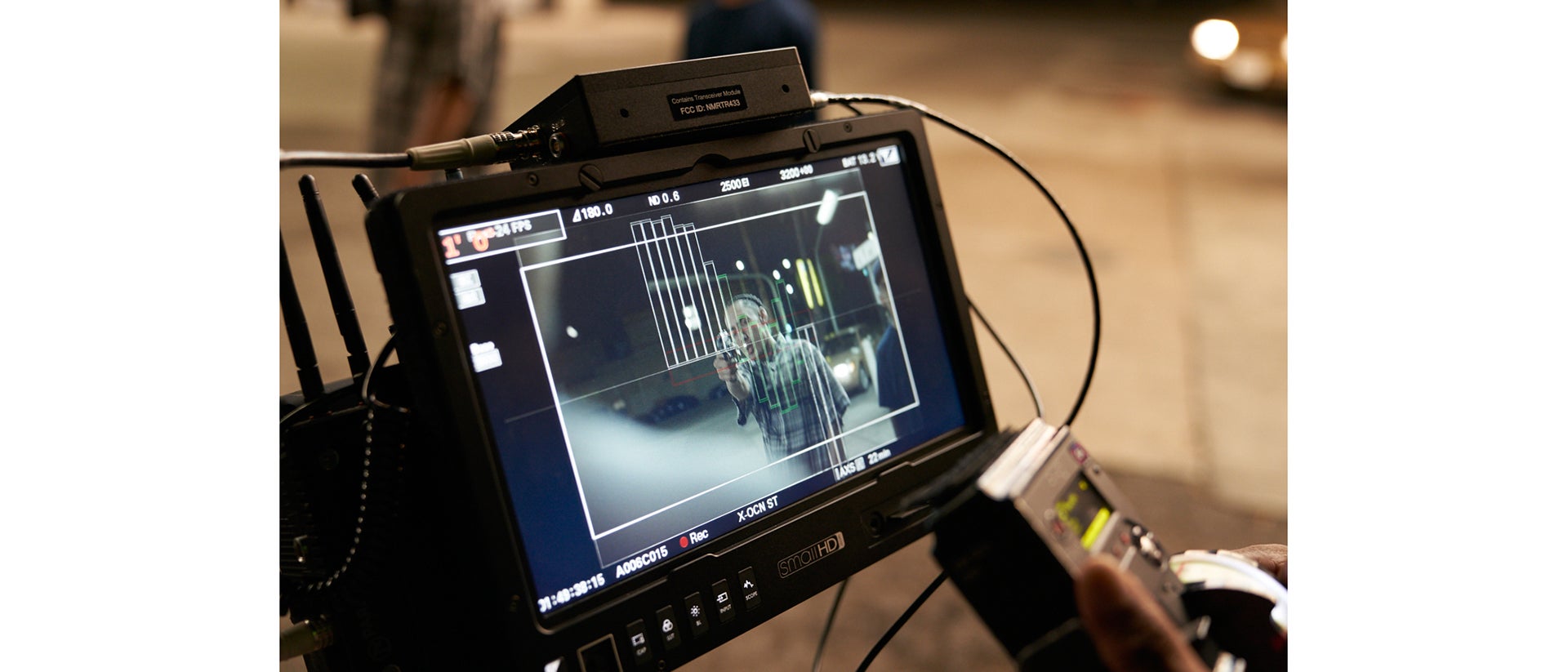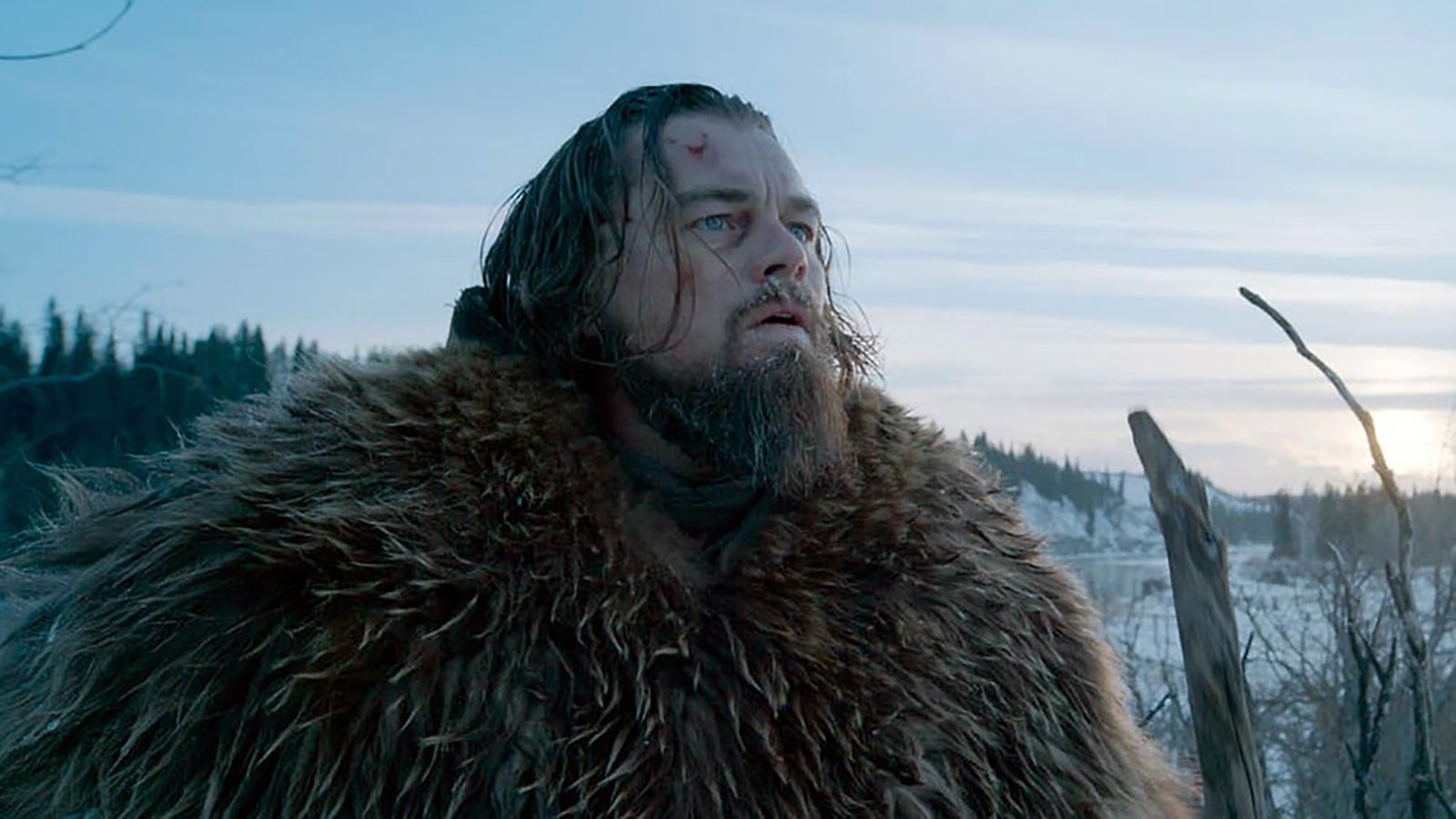
04-27-2021 - Gear, Technology
Your Guide to Understanding Different Types of Camera Focus
By: No Film School
In collaboration with No Film School.
Focus is more than creating a sharp image. It can subliminally elevate your story in many different ways.
When we think about camera focus, we tend to think of how sharp an image looks in the frame, but it's more than that. In visual storytelling, focus directly impacts how the audience may perceive the subject matter. Directors and cinematographers use focus, or more importantly depth of field, to convey a message about the story whether as a literal device—revealing a scary monster—or subliminally to evoke an emotional response to the material or scene.
In this article, we'll discuss what focus is and the different types of camera focus you can use to elevate the story. The better understanding you have of focus, the better storyteller you'll become.

'The Revenant' uses deep focus to tell its visual story. Courtesy: 20th Century Fox
What is focus?
In its basic form, focus is finding the optimal sharpness of an object. It's how clear the image appears in its final form. A completely sharp image is said to be in focus, while an image that's "blurry" is said to be out of focus. In videography, you can find focus either using manual focus where you adjust the focus yourself, or use the autofocus system on the camera, which finds focus for you automatically when engaged. You can even manipulate focus in post using software and tools that can sharpen or soften the image further.
Technically speaking, you can find focus because of light entering a lens and hitting the sensor on a digital camera. A lens is made up of a number of "elements" that are usually paired in "groups" that allow light to pass through. As the light passes through it's collected by the photodiodes located on the digital sensor which produce the image.
With focus, there are two focal planes: a front and rear focal plane. You can think of it as what's happening in front of the lens and what's happening behind the lens. The rear of the focal plane is referred to as depth of focus. The depth of focus is where the mathematical algorithms take place on various autofocus systems. The front area of the focal plane is referred to as the depth of field. The focal plane is the region where objects will appear sharp in the image, but for shooters, we tend to care more about what's happening out front, the depth of field.
Depth of field refers to the area around a subject that appears to be in focus. You can manipulate how much of an image appears in focus by changing the focal length of the lens, adjusting the aperture, or physically changing the distance from the subject.
With a deep depth, more of the image will be in focus, whereas a shallow depth of field will have less in focus around your subject. This is often called shooting "wide open."
- Deep depth of field: Higher T-stop or f-stop number (f/11, f/16)
- Shallow depth of field: Lower T-stop or f-stop number (f/1.2, f2.0)
A Common Depth of Field Misconception
One misconception is that sensor size affects depth of field. Sensor size has no direct effect on depth of field. What a larger sensor does is force a filmmaker to change the focal length and camera distance to a subject to produce similar fields of view. To learn even more about depth of field, check out all our articles on the subject here.
Now that you have a primer on what focus and depth of field are, let's discuss the different types of camera focus.
Deep Focus
When it comes to putting everything into focus, deep focus is where it's at. An image with deep focus has the background, mid-ground, and foreground all in focus, and everything is visible. The most classic example of deep focus is the movie Citizen Kane. More modern entertainment includes the HBO series A Plot Against America, shot on Sony VENICE, where cinematographer Martin Ahlgren used deep focus to tell an alternate universe where famous aviator Charles Lindbergh (a Nazi sympathizer) won the 1940 presidential election over Franklin D. Roosevelt.
When it comes to creating shots with deep focus, you'll need to understand aperture and use larger aperture settings on the lens to create the look. What's unique about having a film with deep focus is that the audience is immersed in the story but also in the environment. Viewers connect with the production design, lighting, and set decoration. It invites them into the space and allows them to look around. And when they watch it again and again, they'll see new things in a scene.
Because of that, deep focus affects your compositions. You have to make sure all the elements in the frame don't distract from the story or call attention to inaccuracies. For example, if it's a period piece and we see modern cars in the background, it's not going to make any sense to the audience. You simply can't hide anything with deep focus framing.
But when it comes to visual context, you can use deep focus to your advantage. How? If your entire project is in deep focus, your viewer will start to connect with that visually. Then, when the moment is right, you can use a shallow focus to emphasize a plot or character point. The audience will feel it, but they won't necessarily know why. You can do the opposite with a project that heavily uses a shallow focus.
Shallow Focus
Shallow focus is the opposite of deep focus in that the area around your subject is generally not as sharp. It uses a shallow depth of field where the out-of-focus area of the image is often referred to as bokeh.
Bokeh is defined as "the way the lens renders out-of-focus points of light." When it comes to lenses, the bokeh will generally look different from lens manufacturer to lens manufacturer and even different within the same family of lenses. Higher-end cinema lenses (and still lenses) will develop lenses with similar bokeh so that when moving from lens to lens, the image is not greatly affected.
Shallow focus is achieved with lower or "faster" aperture settings, increasing the lens focal length, or changing the distance of the camera to the subject. The lower T-stop or F-stop, the more out-of-focus the image will become as it relates to lens focal length and distance to the subject.
You can find examples of shallow focus just about anywhere. It's a useful technique that allows you to draw the attention of the view in a certain direction. It's also a great way of hiding things on set you don't want them to see or even add mystery to a character.
Rack Focus
The rack focus is one of the most essential camera moves for any cinematographer and is one of the most essential camera moves you should know. The practice involves changing the focus of the lens during a shot. The term can refer to small or large changes of focus that play to the depth of field.
How you can rack focus is pretty simple, but perfecting the technique takes time. The ideal way to do it is with a manual focus setup with either a film or digital camera. Generally what you'll want to do is pick two objects in a scene and pull the focus between the two so that one starts in focus and finishes on the second in focus. It's a good idea to have a run-through before filming your first take, but as with many directors, the run-through is take one. Marking the focus ring can be beneficial in creating smooth rack focus.
Rack focus can also be accomplished on Sony's FX9, FX6, and FX3 using autofocus and adjusting the AF Transition Speed from 1-7, and the AF Subject Shift Sensitivity from 1-5. It's a very effective feature, especially when you're a single shooter that produces great results that don't look clinically digital.
Soft Focus
Not to be confused with shallow focus, soft focus affects the entire image as it creates a "soft" blur or glow around a subject. Soft focus shots require special filters or lenses to achieve the look, but can also be done in a DIY fashion by wiping vaseline on the lens or by stretching nylon across the front lens element.
The idea behind soft focus is that it creates an almost dream-like and slightly unreal quality. It's a technique used in older films and a good way to separate flashback story points to reality or if you want to create a trippy sequence.
Tilt-Shift
Tilt-shift often refers to lenses that manipulate the perception of an object or subject. With tilt-shift videography, you can tilt or shift the lens in relation to where the image is focused. Doing so can dramatically change your plane of sharp focus where images appear miniature in size.
Tilt-shift is a great way to control perspective. Shifting the lens up or down can eliminate unsightly angles of buildings or landscapes, which is why it's used in architectural photography. It's also a good way to minimize or maximize the depth of field. You can tell when a tilt-shift lens has been used when objects look miniaturized.
Conclusion
Now that you have an understanding of what focus is and the techniques used to frame shots, you can start exploring different ways to visually tell your own story. Remember, there really are no rules when it comes to creativity. If it makes sense for your story, go for it.
Do you have any other ways to use focus in storytelling? Let us know in the comments below.




